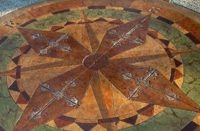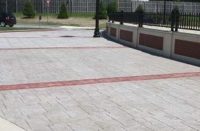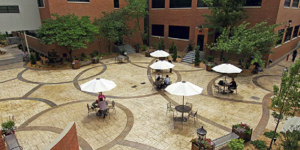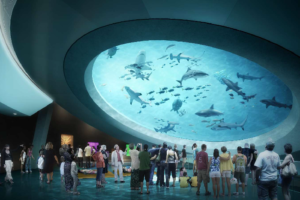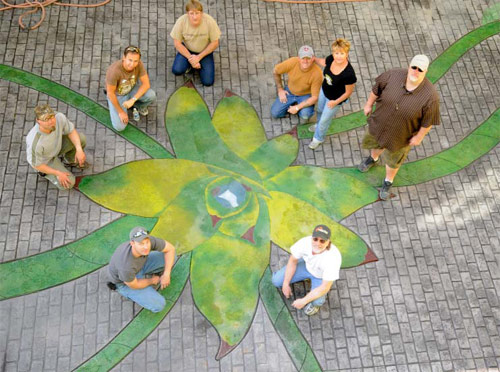
Bob Harris of the Decorative Concrete Institute was asked about his experience training and working at the Children’s Museum of Phoenix as part of the Concrete Decor Show & Decorative Concrete Spring Training. This is what he told us:
This was a perfect situation for us as well as many other artisans working at the museum to showcase decorative concrete and its diverse range of applications. People were amazed that we could transform a nonfunctional gravel courtyard into a colorful piece of art. As a matter of fact, a few museum employees were so inspired by the work, we heard that they were going to get married on the new courtyard, which is a testament to the influence decorative concrete can have.
 Oftentimes in a training environment, unfortunately, some of the beautiful artwork is disposed of. In this case, it is very gratifying to know that all of the artisans’ work has become a permanent feature of the museum for many future generations to enjoy through the years. Not only has all of the work performed at the museum enhanced the overall curb appeal of the property, it has also provided a canvas for children to explore, where they can develop their own conclusions about the work, which is what the Children’s Museum of Phoenix is about.
Oftentimes in a training environment, unfortunately, some of the beautiful artwork is disposed of. In this case, it is very gratifying to know that all of the artisans’ work has become a permanent feature of the museum for many future generations to enjoy through the years. Not only has all of the work performed at the museum enhanced the overall curb appeal of the property, it has also provided a canvas for children to explore, where they can develop their own conclusions about the work, which is what the Children’s Museum of Phoenix is about.
 When one reflects on what is happening, this type of environment is truly special. There is no debating, no finger-pointing, no I’m-better-than-him-or-her type of attitude. It is about a passionate group of decorative artisans willing to dedicate their own time, materials and knowledge for the same common goal, which is to expose and grow the business of decorative concrete. Everyone involved was more than willing to help out despite, in some cases, some companies being fierce competitors. It is refreshing to see this type of atmosphere.
When one reflects on what is happening, this type of environment is truly special. There is no debating, no finger-pointing, no I’m-better-than-him-or-her type of attitude. It is about a passionate group of decorative artisans willing to dedicate their own time, materials and knowledge for the same common goal, which is to expose and grow the business of decorative concrete. Everyone involved was more than willing to help out despite, in some cases, some companies being fierce competitors. It is refreshing to see this type of atmosphere.
I think one can see after the Phoenix event that decorative concrete applications can be some of the most versatile applications in the world compared to other materials. These applications are not bound to the residential or commercial markets. Because of their broad range of choices, high-end architects and designers are more frequently using these materials in their projects. They’re realizing that decorative concrete is now part of the mainstream and no longer considered a passing trend.
www.decorativeconcreteinstitute.com

